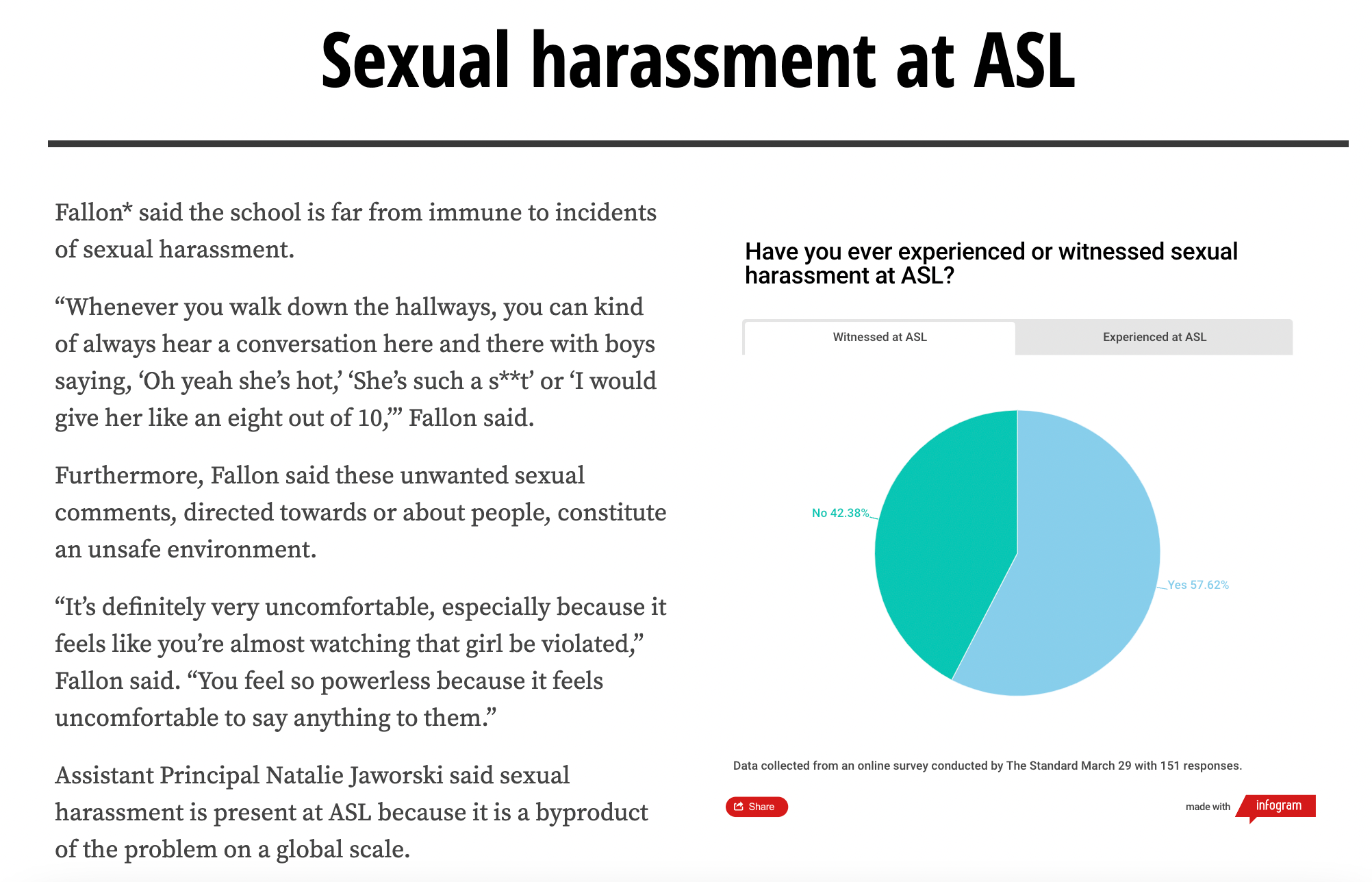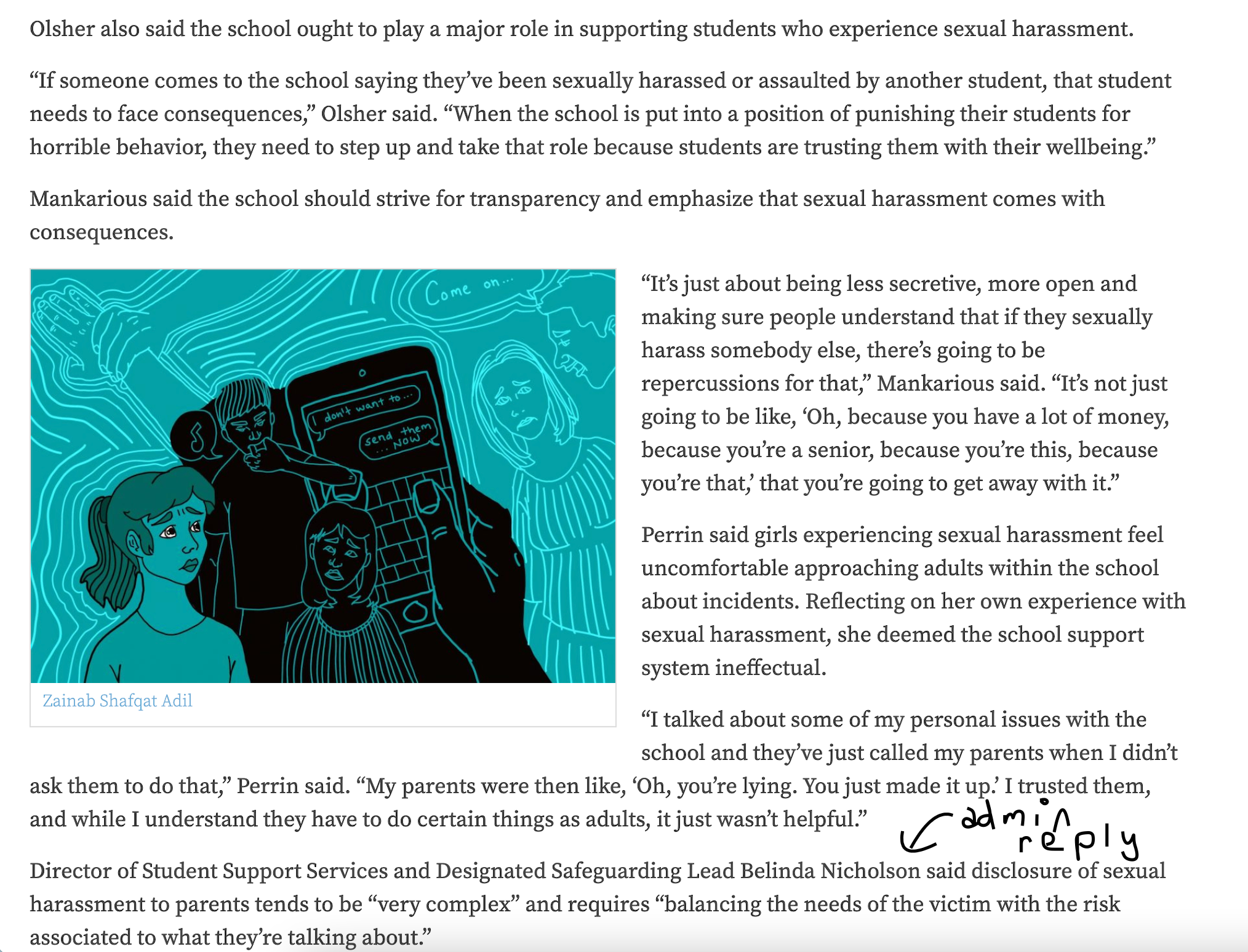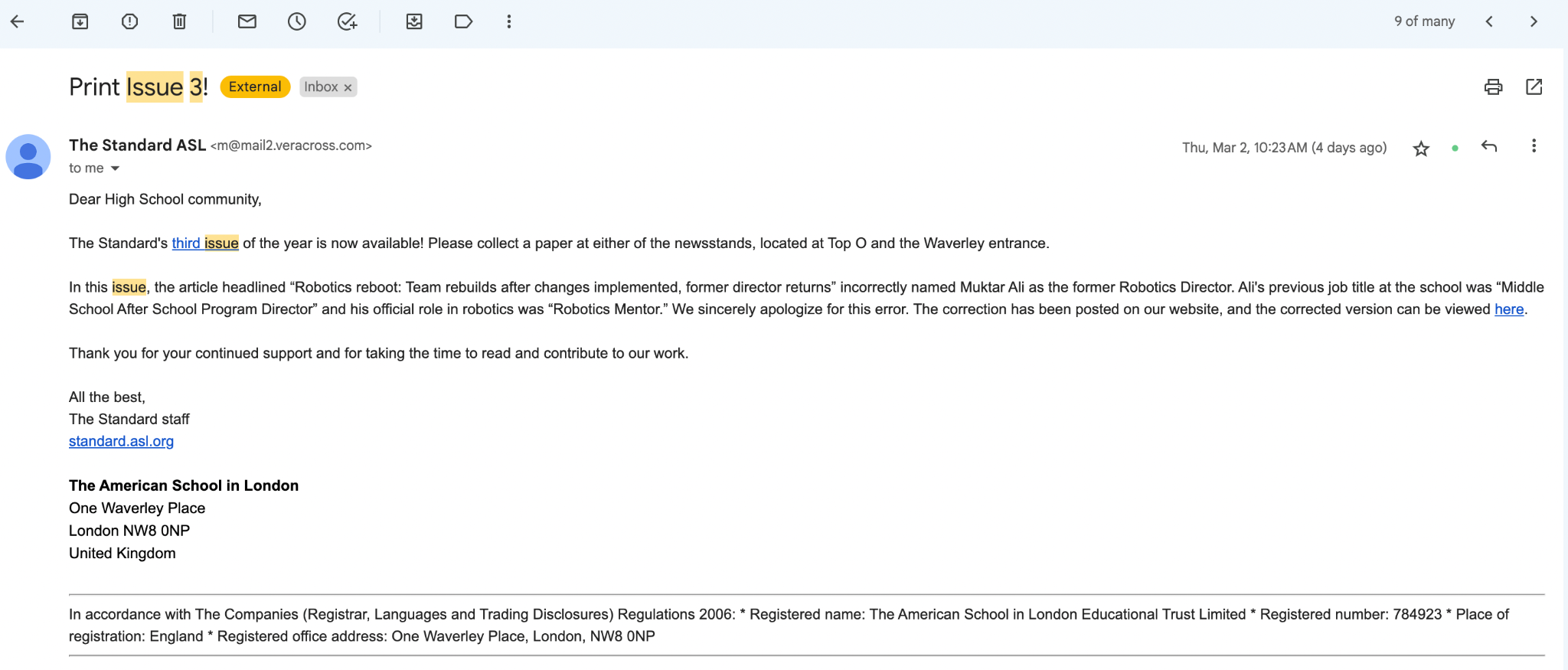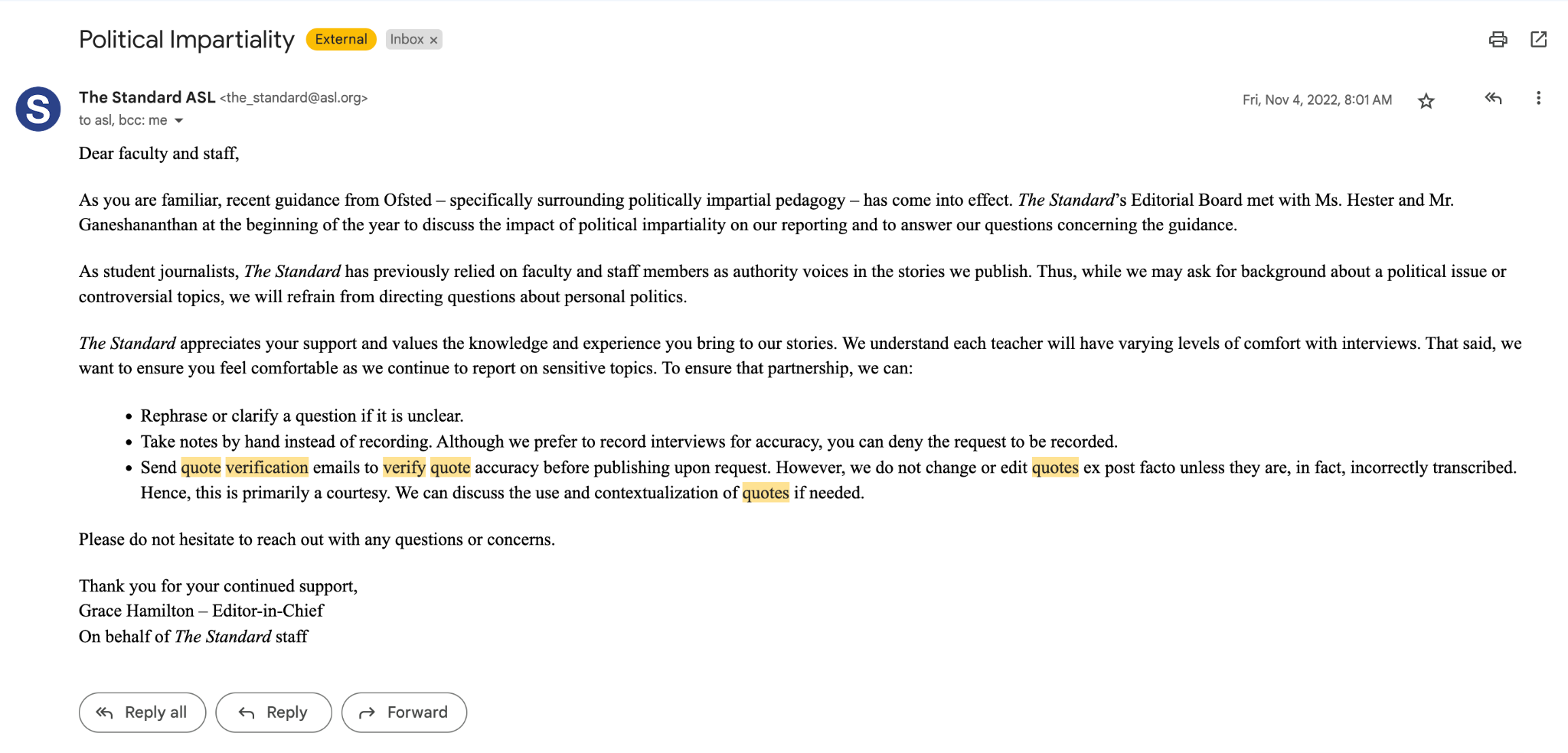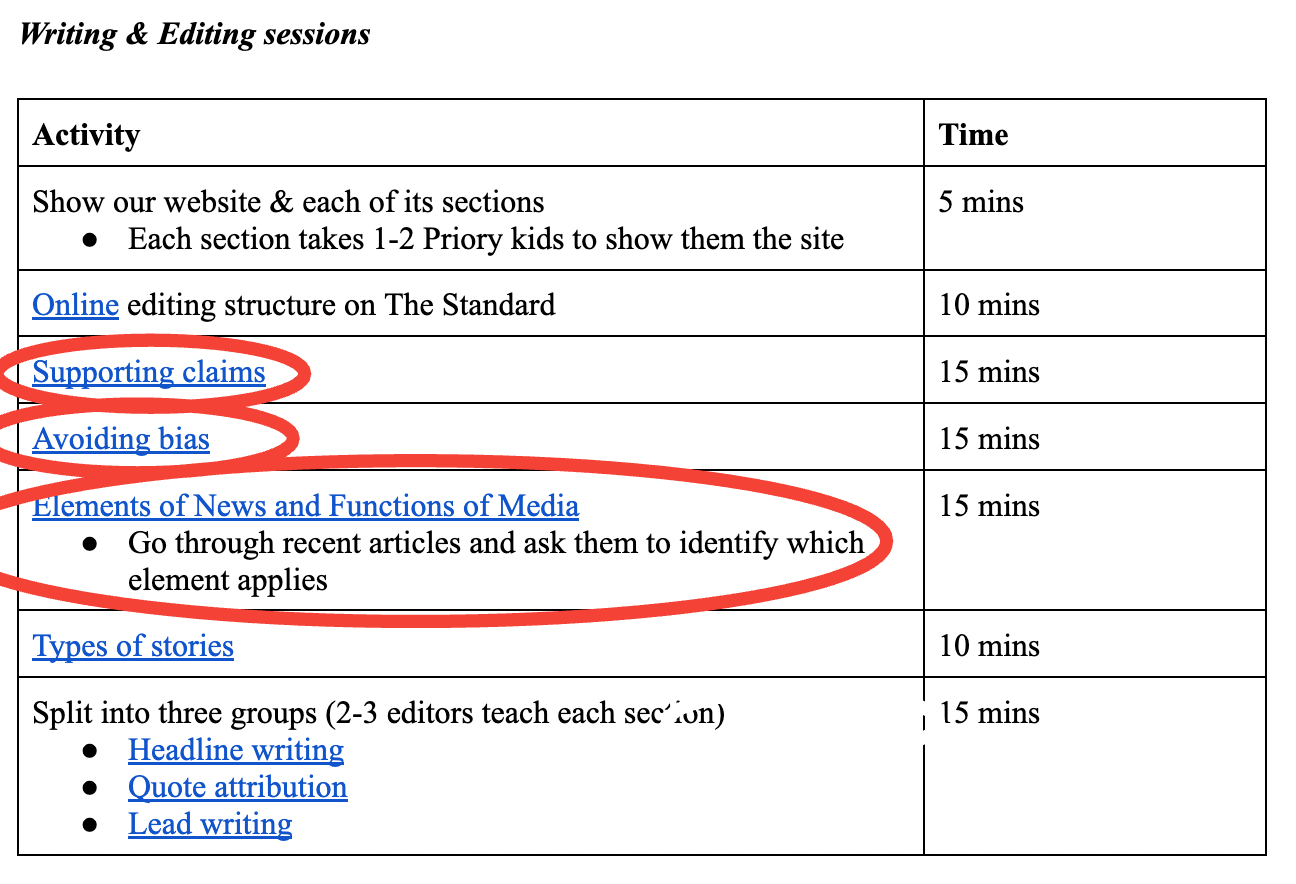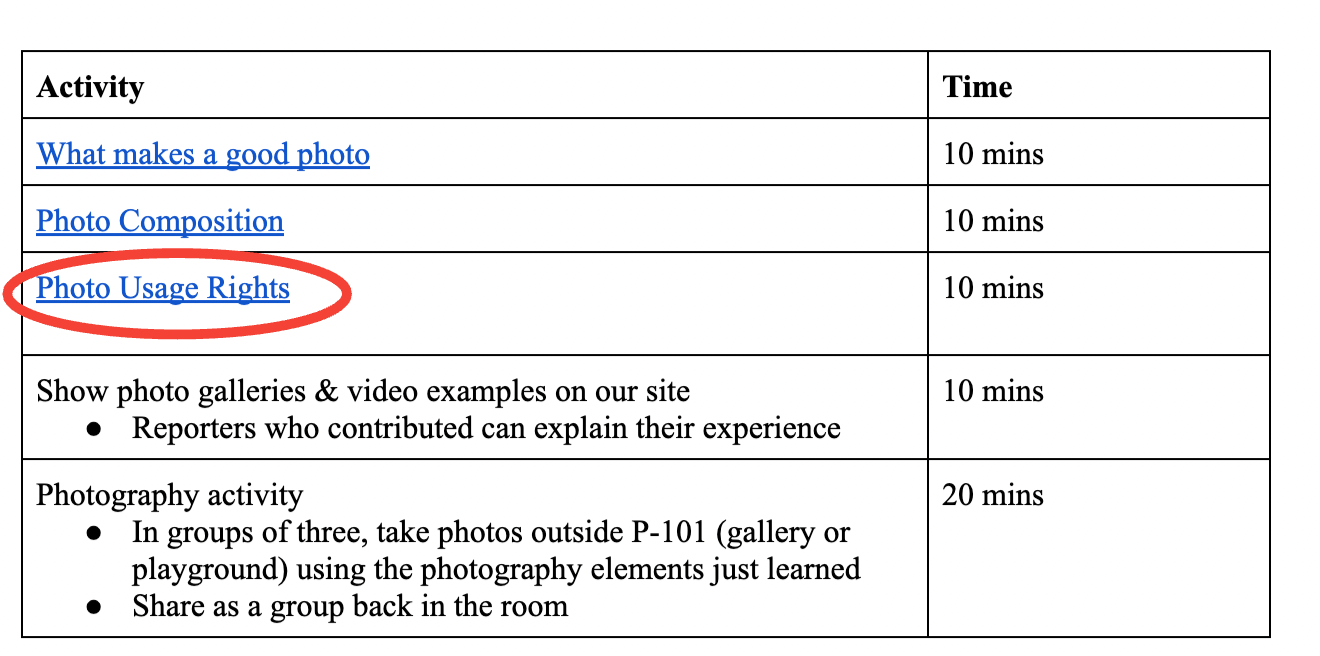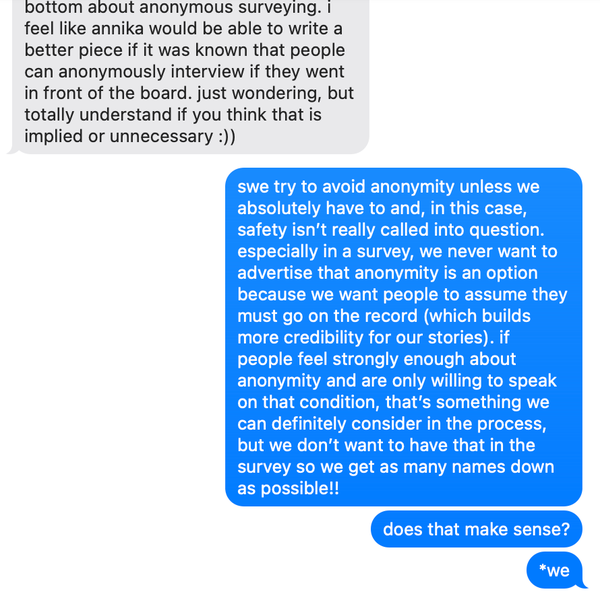

Entering my role, one of my main priorities was reviving our staff manual. I had created a “Standard everything guide” – a series of linked documents outlining journalistic ethics, job responsibilities and effective editing habits – for all of the staff to reference. As an editorial board, we walked through each of these documents, including related documents created in prior years that were slightly outdated or less relevant.
My goal has been to make the documents regarding ethics and news literacy living and breathing, ones all staff both reference and embody. When editors ask me a question regarding ethics or news literacy, I consistently refer them to our revised manual. Now, I am creating a comprehensive staff manual flipbook detailing our journalistic practice as a publication.
Specifically referring to ethics in journalism, I created this slideshow guide for all staffers to reference:
Law, ethics and news literacy seep into every facet of my reporting. In my article reporting on sexual harassment, I deliberated over the use of anonymous sources. As a publication, we try to avoid the use of anonymous sources to uphold credibility, unless we grant the source anonymity to protect their safety. Two of my interviewees expressed an interest in contributing to the article, but only with the condition of anonymity. Thus, I made the decision to tell these girls’ stories under a pseudonym.
Recently, a reporter began pursuing a story on the Student-Faculty Disciplinary Board institution at our school. She created a survey gathering student input about the group and its effectiveness, and when the survey reached me for edits, it included a question written as, "If you would like to be interviewed anonymously, reach out to (the reporter)." When sending my survey edits back, I asked her to delete the anonymity disclaimer to avoid encouraging those who might talk on the record otherwise to opt for anonymity. I provided an explanation to both the reporter and the features editor working with her. My experience judiciously using anonymous sources has massively helped me guide my staff in appropriate and thoughtful use:

Within the article about sexual harassment, I also recognized that I needed to include an administrative viewpoint from our Safeguarding Lead on the school’s actions to include the right of reply. Students called out the administration and its lack of action around sexual harassment, but to report responsibly, I needed to include a comment from the administration:
Similarly, when writing a piece examining injustice within the art industry, a few of my sources criticized the art department for their lack of diversity in the curriculum. To ensure the right of reply, I reached out to a leader in the department to obtain his comment in response to the students' accusations. By including both perspectives alongside each other, the reader was able to obtain a multifaceted perspective. I have since guided multiple reporters in upholding the right to reply.
Finding credible sources to back the information in all of my articles is also key. In my recent article exploring the emergence of ChatGPT in our community, I ensured that I spoke to the computer science teachers – with genuine experience in the field of artificial intelligence – to accompany the student voices speculating on its emergence.
Source variety is similarly key. I always ensure I talk to a wide array of sources before publishing a piece to prevent any editorializing or omission of important facts or perspectives. When guiding writers in their own reporting, I have frequently requested that they return to the interviewing process to add a crucial perspective to the story or cite their source's experience with the topic to uphold journalistic integrity.
Before beginning an interview, I always ask my source if they are willing to be recorded for transcription. This way, I can ensure that I accurately quote them and accurately contextualize the information and opinion they provide. If a source declines recording, I take copious notes in my reporter's notebook and only include quotes of which I am absolutely sure are accurate. I also included these guidelines in my interviewing guide for my staff to reference:
The Standard does not quote check every article – it is almost impossible to post at a timely pace while having to send email quote checks for every story. However, if a source does explicitly request to preview their quotes before publishing, I will send them. That said, I never change quotes at their request unless they are inaccurate or misrepresented.
For my article on sexual harassment, I interviewed our assistant principal, who requested I verify her quotes given the sensitive nature of the topic. Below is the quote verification email I sent prior to publishing the story:
To gain credibility with our audience and ensure that the content we publish is factually correct, I have made fact-checking a priority. In every article I edit, I double-check hyperlinks to ensure that the paraphrased fact or piece of information is both correctly cited and comes from a credible source. In my own reporting, I always fact-check my work and verify the credibility of my sources to lead by example.
When editing a news article earlier this semester, I clicked on a hyperlink in the reporter's story to fact-check and determine the source's credibility. In doing so, I noticed that her paraphrase of the information was incredibly similar to the external source's phrasing. Thus, I commented requesting that she rephrase. Later, I followed up in person to explain the importance of correctly paraphrasing sources and avoiding the cross into plagiarism.
On our website, we have a corrections policy published. Click the image to view the policy on our website:
In our most recent issue, an error in an article's headline came to my attention. When we first began distribution, I sent a community-wide email correcting the error, per our corrections policy, and linked to the corrected PDF.
We have similarly published a Code of Ethics on our website, which is available for our audience to view for full transparency and accountability. At the beginning of the year, I walked my new staff through this policy and clarified any questions. By reminding our staff of our responsibility as student journalists from the start, I was able to mitigate any ethics issues down the line. Click the image to view our policy:
Given the changes recently implemented in my school around political impartiality adhering to U.K. educational requirements, I sent an email to all faculty clarifying our policy as journalists for the student publication. Many faculty members were confused about whether they could openly speak in interviews and what reporters could inquire about amid these impartiality guidelines, and thus, refused requests altogether. In this email, I outlined our journalistic practice and how we could make teachers comfortable sitting down with us:
Objectivity, arguably, is a buzzword in today’s world. As a journalist, I see it as my utmost responsibility to leave my biases at the door when reporting. In my coverage of controversial topics – from sexual harassment to artificial intelligence – I include perspectives on both sides of the issue and ensure that my language is both objective and correctly attributed.
I also have guided my team in separating news reporting from editorializing. For example, an Instagram account unaffiliated with our school came under fire from the school administration just this past month. Students involved in the account's posts were facing potential disciplinary action, and an editor wanted to report on the case, but was incredibly heated about the disciplinary result. I recommended that he write one piece objectively reporting on only the news element of the story as well as an opinion commentating on its events and their implications.

In article I recently edited about how Prince Harry's "Spare" memoir undermines the British monarchy, I noticed parts where the reporter didn't back up his claims with facts and sources. When editing, I made a few comments targeting sections of his piece where he needed to add evidence to avoid being accusatory with no real basis:

When The Standard was approached by another local school to guide them in kickstarting their publication, I recognized the importance of giving an overview of law, ethics and news literacy. In the lesson blocks I planned, I included these expectations and requirements.
In the writing and editing session, I included two 15-minute workshops about supporting claims, avoiding bias and the elements of news/functions of the media. By understanding these fundamental tenets of journalism, their publication is now equipped with the tools to approach their reporting ethically and abide by U.K. laws.
In our photography session, I included a presentation about photo usage rights. Ensuring that photographs are properly credited and each image is free-use is incredibly important in reporting. To show how photo usage rights apply in our own program, I showed them various examples of images credited to Pexels or Wikimedia Commons on our site.

